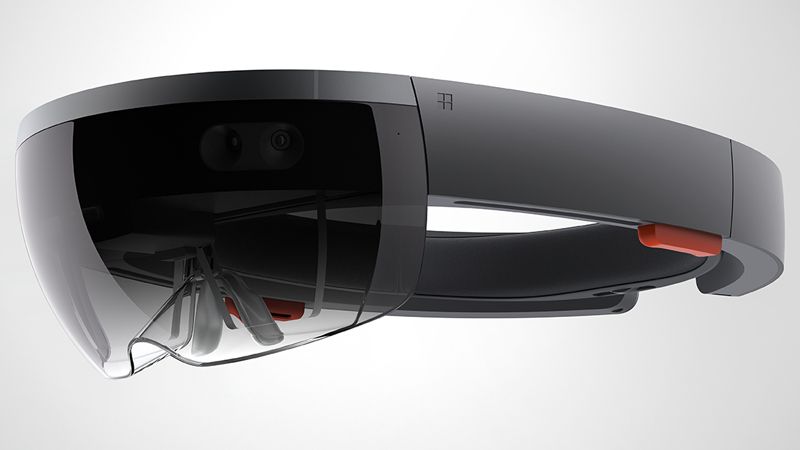
Design, comfort, software and our early verdict
HoloLens, Microsoft’s augmented reality (AR) viewer, feels like the future of computing.
Being upfront, the headgear that I tried at Build 2015 was “early development hardware,” and it definitely felt that way. But the potential, and how close HoloLens is to achieving it, is simply remarkable.
[Editor’s Note: Microsoft didn’t allow cameras inside the Build 2015 HoloLens demo room. These images are of a HoloLens inside a glass case that was just outside.]
The moment I tried on HoloLens during a “Holographic Academy” session with fellow journalists, I thought, “This is like having a PC on my face.” It’s not quite that functional yet, but that’s how the headgear, and what you see and can do with it, makes me feel.
There was no gaming in the session I attended, like we’ve seen since (more on that later). Instead, I was a developer for 90 minutes, crafting an app in Unity and adding HoloLens functions as I went.
With every new function added, like gesture controls and spatial sound, I witnessed how it translates into the HoloLens experience. The session aimed to show how easy it is to develop for HoloLens, but it also demonstrated what you and I will experience once it’s out.
But, before we get into the nitty gritty, let’s hit the latest news around HoloLens.
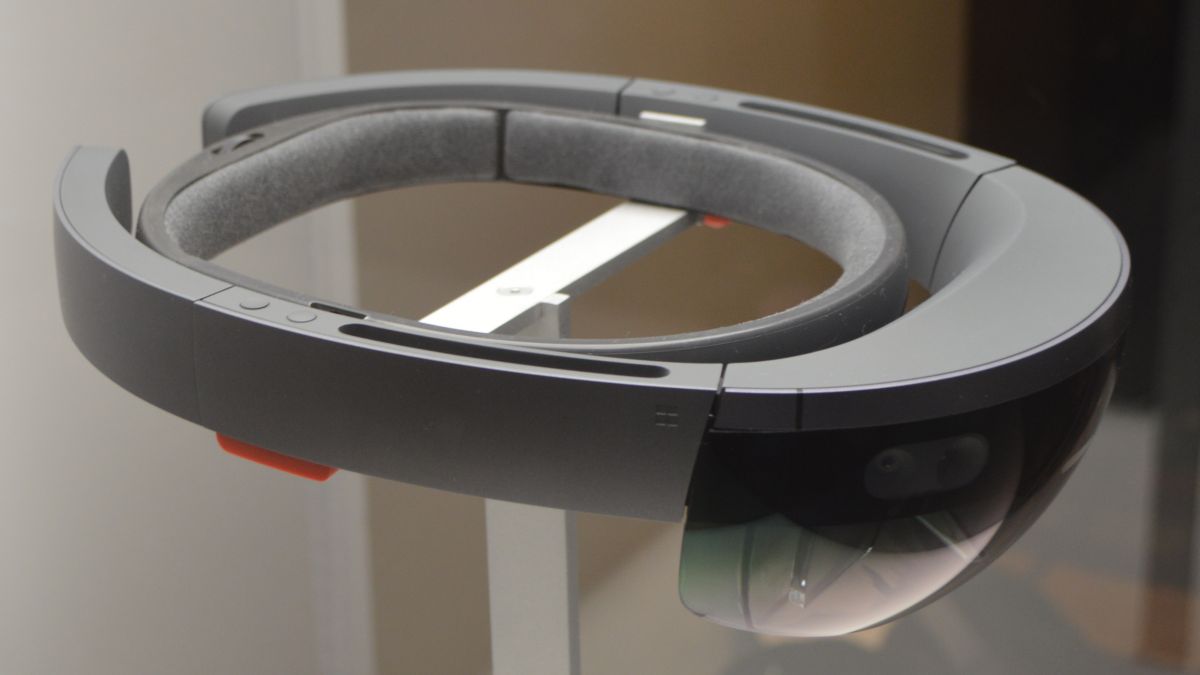
Latest developments
Since we last saw the HoloLens back in November 2015, there have been several new bits of news to surface around the device.
Namely, Microsoft has projected the HoloLens to sport just 5.5 hours of maximum battery life, and a mere 2.5 hours when under “heavy load.” While that doesn’t sound great, consider that most leading laptops and smartphones last about as long under a heavy load, and they’re not projecting 3D, AR imagery constantly.
Soon after, we learned of a HoloLens Bluetooth Clicker, our first look at an official controller that isn’t your hands. It’s also an hint toward the device’s enterprise applications.
Following that discovery, a HoloLens Companion app for Windows 10 and Windows 10 Mobile was announced. The app will broadcast what a HoloLens user is seeing to folks tuning in via the app. We’ve already seen this function teased in demo reels, so it’s not exactly a massive surprise.
Most recently, pre-orders for the developer edition of HoloLens were made available to the tune of a whopping $3,000 (around £2,160 or AU$4,202).
Plus, Scott Kelly is impressed by the thing – and he’s been to space.
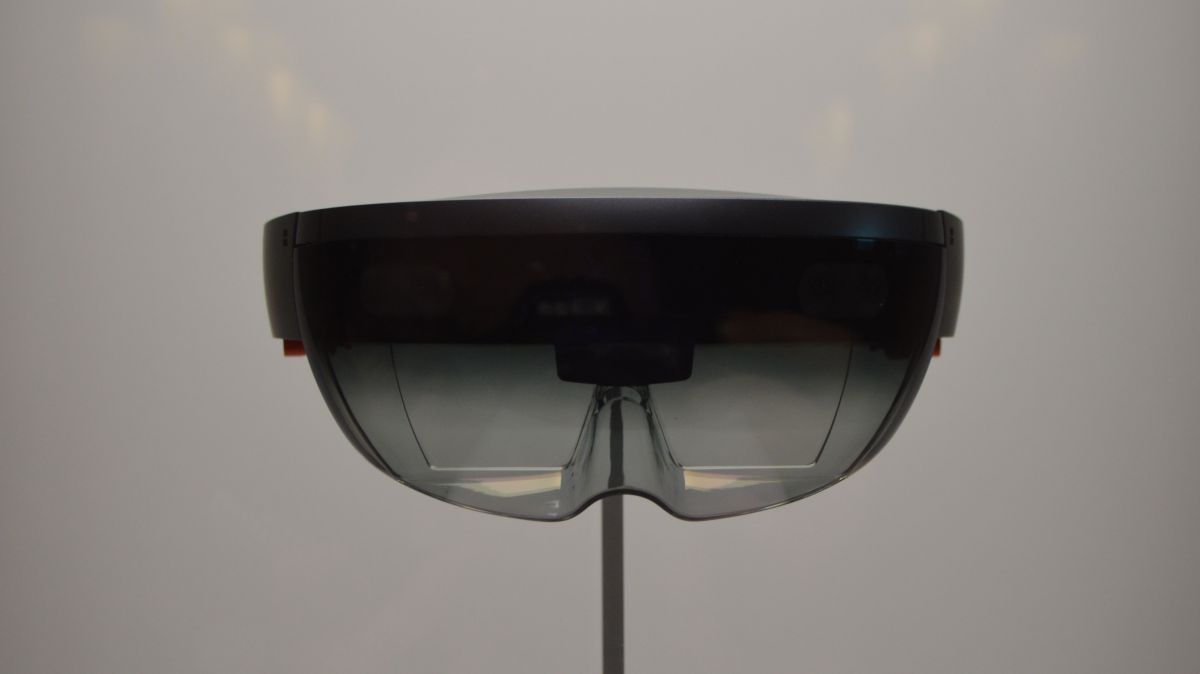
Build quality and comfort
HoloLens is essentially two rings: a thicker, plastic outer one that contains the guts, and a slimmer, cushioned inner one that wraps your head. The inner ring’s fit adjusts with a roller in the back, sliding forward and backward.
That cushioning is a small touch, but one I appreciate for making it easier to forget you’re wearing the viewer and focus on the AR imagery in front of you.
The device isn’t supposed to sit on your nose, but I found its rubber nose guard to inevitably fall down my nose no matter how often I pried the HoloLens forward. Thankfully, it’s optional and comes off easily. HoloLens feels a lot better for me with it off.
I also struggled to get HoloLens to fit every time I put it on. I had to regularly re-tighten, re-situate and realign the headgear. When everything fit nicely, the AR imagery was in full view and it felt right. But if it was too tight, too high up or too far forward, it hindered the experience.
Standing still made for the best overall viewing experience. The adjustment issues cropped up especially when I would move around, which is part of the point in HoloLens.
If you have short hair or it’s pulled back, you might not have as much trouble as someone with long, loose hair, like myself. It may have been my ability to adjust, but I had a slight headache after I took HoloLens off, like I had been wearing a baseball cap that was two sizes too small.
The headgear I used was untethered, and I didn’t need my hands for anything other than selecting my “hologram” to move it. It wasn’t wired up for battery life, like the first early prototypes shown to press.
Fitting issues aside, when HoloLens fits right, it’s comfortable. But, like all virtual reality (VR) and AR headgear, its weight is front loaded. You can’t help but feel a noticeable weight hanging off your forehead.
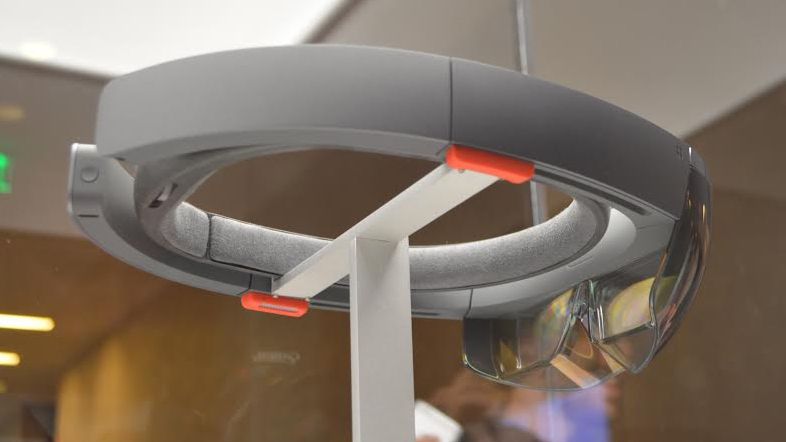
The weight isn’t uncomfortable, but it is significant. If Microsoft can somehow counterbalance the weight on the sides or back, it would likely alleviate the front-heavy sensation.
I wear glasses, and I used HoloLens with them on. They don’t press into my face or feel tight around my head, unlike with most VR headsets. I also didn’t get nauseous, a frequent occurrence when I wear Oculus Rift.
It helps that I can still see my surroundings with HoloLens, so I don’t feel disoriented or claustrophobic. If only the HoloLens see-through screen weren’t so dark (but the room was dimly lit, so it may be just right for a brighter room).
Walking backward makes me feel most uneasy, as I can’t quickly turn to see whether something is behind me. The headgear also obstructs my upper peripheral view, so some of my vision is obscured.
HoloLens looks and feels like a premium device. Nothing about it screams “cheap”, and that has already been reflected in the developer edition’s price.
The gadget looks like it belongs in the office but would also blend well in any living room. As is, HoloLens feels too delicate to stay clean and unscathed in, say, a construction site.
I find myself handling HoloLens gently, so unless Microsoft does some ruggedizing, you’ll probably want to keep HoloLens out of the reach of youngsters.

Holographic viewing
The “hologram” – which these are not by the strictest definition – in my HoloLens experience consisted of two floating spheres, two yellow slides and some blocks stacked on a pad of paper.
It was called “Project Origami,” and so was meant to look and sound like folded paper.
To give the holograms (which turned into a game) functions, I added controls (gaze, gesture and voice), spatial sound, spatial mapping and the ability to pick up, move and place the holograms around the room.
Finally, an underworld was added to the hologram so that, when the spheres fell, an explosion created a gaping hole in the floor that the they descended into. Looking down the hole revealed a new world, complete with rolling hills and cranes soaring underneath my feet.
The HoloLens images projected onto the real world around me are vibrant, sharp and realistic – though, a little jittery. When I move around them, the holographic shapes behave like real objects, so I can see their backsides – or not at all, if they’re obstructed by other holograms.
When the paper spheres roll onto the floor, they roll around just like real balls would, bouncing around objects and looking real enough to pick up. When I peer into the underworld that opened up on the floor, it’s like I’m looking into, as my HoloLens “mentor” put it, a world I didn’t know was there the whole time.
But, looking at holograms slapped on top of the real world is just one half of the HoloLens equation. Controlling the holograms is the other.
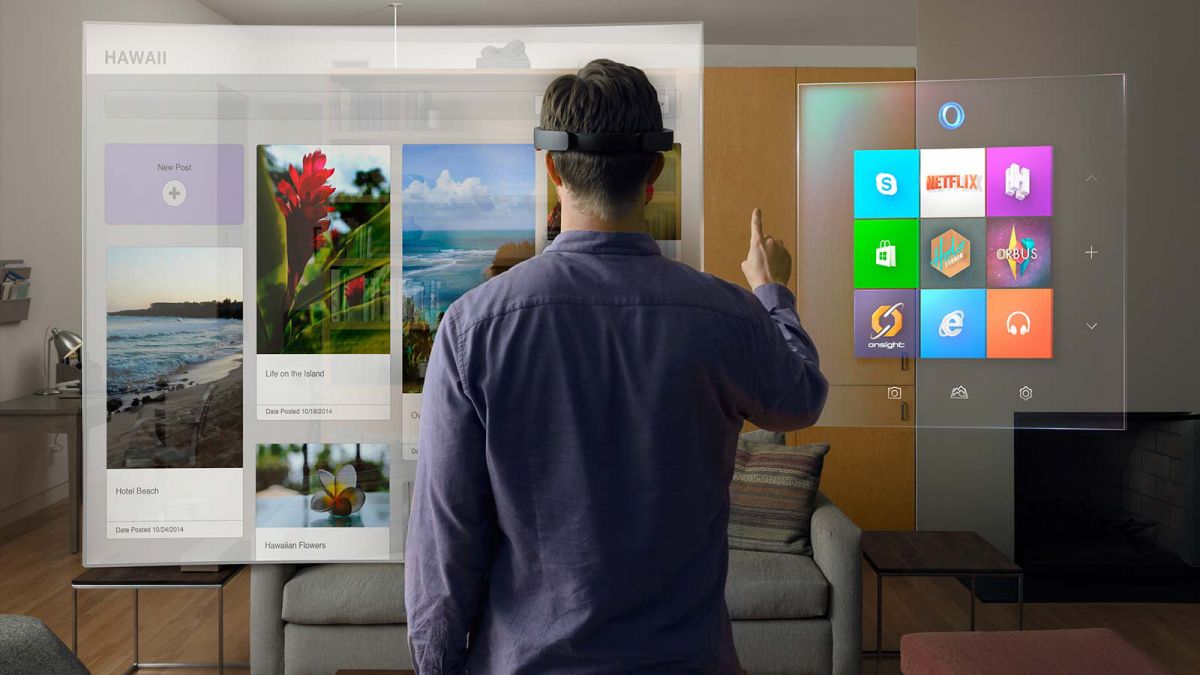
Controlling and touching holograms
The HoloLens gaze controls are responsive and should be easy for any user to get the hang of almost immediately. It’s the other kinds of input where HoloLens has slightly more trouble.
While voice controls work, there is a lag between giving them and the hologram executing your commands. I had to say, “Let it roll!” to send the spheres down the slides, and there was a second-long pause before they took a tumble. It isn’t major, but enough to make me feel like I should repeat myself.
Gesture control is the hardest to get right, even though my experience was but a one-fingered, downward swipe. It took time to figure out the best distance to swipe away from HoloLens and where to put my finger for it to register.
Just imagine someone repeatedly swiping their finger downward in mid-air – that was me.
Once I finally found the sweet spot, though, the control worked better than expected. Instead of reaching out to touch the hologram, the swipe worked best when I held my hand comfortably in front of me.
Using gestures, I could select the Project Origami diagram, use my gaze to move it around the room, and then use another pinch to lock the hologram into a new spot (I moved it from in front of me to a couch to a coffee tablet to a desk.). This wasn’t Minority Report-level selecting and swiping, but impressive nonetheless.
The HoloLens uses spatial audio, which takes the experience to a whole new level. Ambient music played during the demo, and the spheres rolled to the the sound of crumpling paper.
The sound got louder as I approached the hologram and faded as I moved away. It added another dimension to the HoloLens experience, making it that much more immersive.
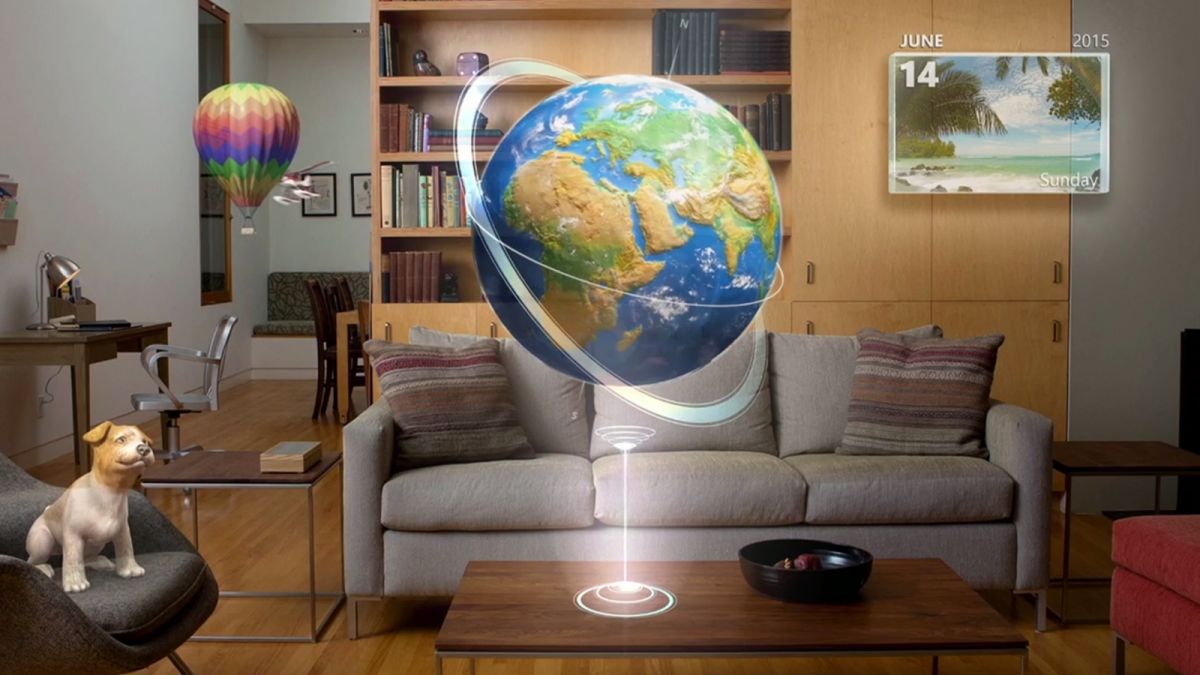
Of course, as I viewed the holograms, I was still able to see my surroundings. The holograms weren’t disrupted if someone happened to walk through my projection.
My favorite part of this HoloLens demo was a wire frame mesh that appeared on real-world objects to show how HoloLens perceives them. The mesh changed as HoloLens registered the objects and I moved my head to look at a new spot.
It also wrapped the people around me, though I could still make out their features from behind the digital framework. It was an awesome AR moment: the people themselves became part of the hologram.
As cool as it all was, it would have been less distracting if the images disappeared when I was talking to someone. From speaking with Microsoft representatives, it sounds like this will be possible with other apps, but not Project Origami.
It feels weird to talk to someone with HoloLens on – a little rude, as if I were wearing sunglasses indoors (or at night – zing).
The biggest issue with HoloLens’s holographic viewing is that the field of view is limited to what amounts to the size of a monitor in front of you – equivalent to 15 inches, we know now. You can see the edges of the virtual space where the hologram lives (which are basically the edges of the inner HoloLens frames).
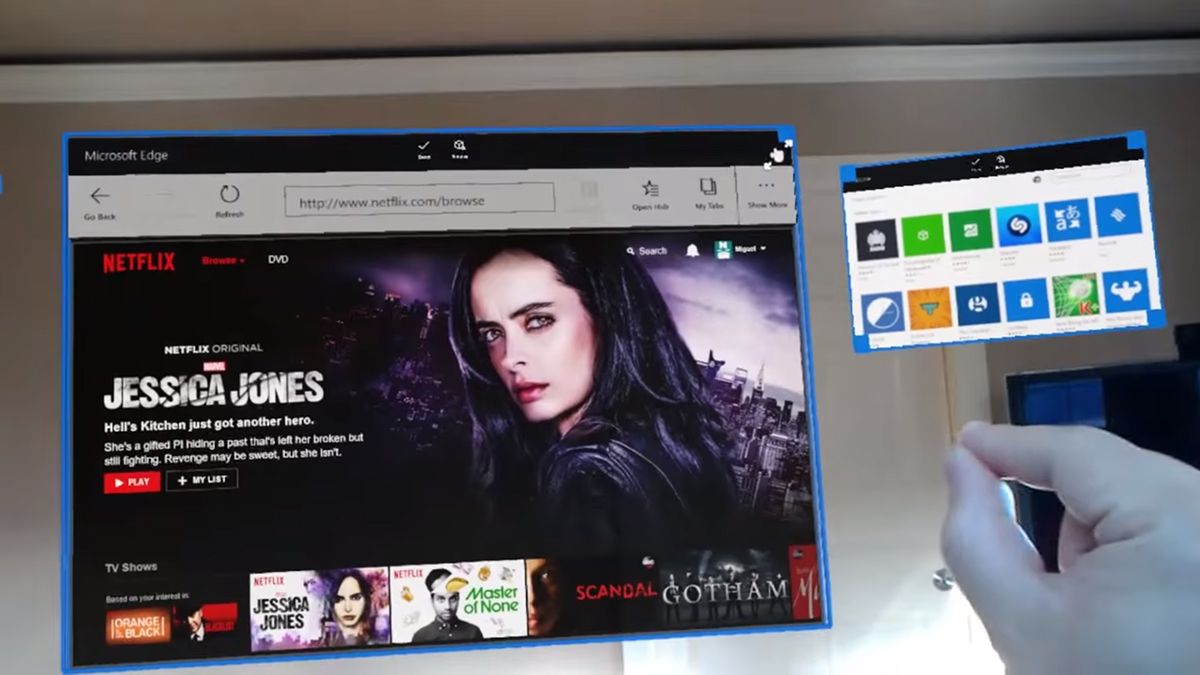
Looking outside that space, or moving too close into it, cuts the the hologram off or makes it disappear completely. These edges weren’t visible during the wire mesh portion of the demo and therefore was more immersive, but the origami demo seemed as if it existed on a limited plane.
The holograms look best when I’m standing about four or five feet away and when there is more going on, like the wire frame mesh. There were glitches in my demo, and it didn’t work perfectly every time. Regardless, none of its takes away from my enjoyment of HoloLens – demos are always incomplete.
It’s important to note that, while Microsoft’s on-stage HoloLens demos have featured polished and seemingly advanced holograms, what I saw was not in the same league in terms of quality, complexity or functionality.
Maybe Microsoft is saving all the wow factor for its keynotes, but my demo was a less refined and less capable version of what we’ve seen in on-stage demos. My experience, while impressive, felt like child’s play AR compared to what’s been in Microsoft’s keynotes.
That’s not to say that HoloLens can’t project these advanced images down the road. And, as Microsoft said, I was wearing “early development hardware.” But Redmond has work to do to before the reality it’s projecting onstage aligns with what you and me actually see.
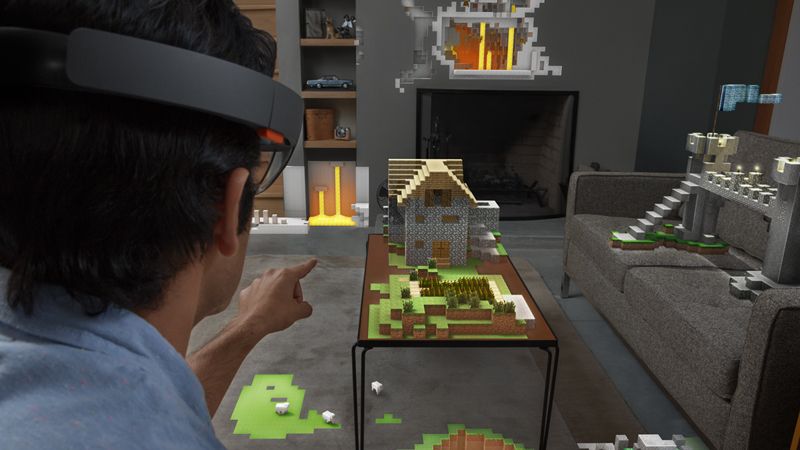
Early verdict
Neither the HoloLens software nor the hardware is perfect. But, if Microsoft can work out the kinks, HoloLens will be an immersive entertainment device that could easily fit in an office.
Despite its faults, using HoloLens was delightful. With more robust apps, more reliable functionality and an improved viewing experience, HoloLens could become the AR viewer to end them all.
Frankly, HoloLens could transform how we interact with the world. These are lofty ideas, and the device as-is won’t accomplish any of them yet, but the potential is there – and strong.
HoloLens is the most fascinating tech I’ve tested in a long time. We still don’t know how much it will cost at retail, but HoloLens seems to have unlimited potential – that which it seems like it can actually live up to. And that alone is incredibly exciting.
Head to Page 2 for our brief impressions of a few more recent experiences with HoloLens.
Joe Osborne has also contributed to this review.
Further impressions of HoloLens
What follows are our impressions of HoloLens following demonstrations provided through a more recent visit by Volvo to techradar headquarters, penned by Duncan Bell, and during E3 2015, penned by Nick Pino, respectively.
Volvo puts HoloLens to work
The $3,000 HoloLens has another new demonstration: a virtual car showroom for Volvo. Yes, that sounds boring, but it’s actually an impressive showcase for what Microsoft’s “mixed reality” headset can do – and what it can’t do.
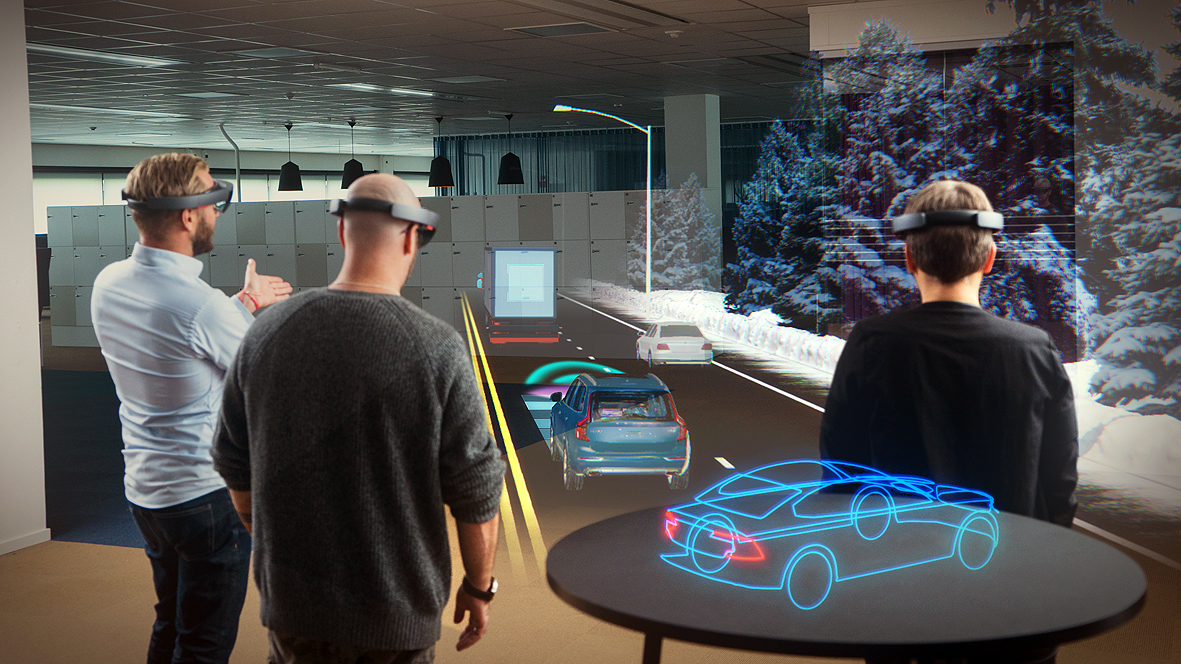
First up, while the hardware didn’t appear to have been updated since Build 2015, I found it comfortable to wear, at least for the 15 minutes that the demo lasted. This may very well be because, with a fairly prominent – but not huge – nose and shaved head, I have the optimal cranium for HoloLens.
I also wear glasses, and these fitted easily enough under the headset.
The virtual cars that appeared before my eyes were genuinely impressive, both at miniature, tabletop size and real-to-life car size. They looked like CGI and weren’t photo realistic, but they were “real” enough to impress.
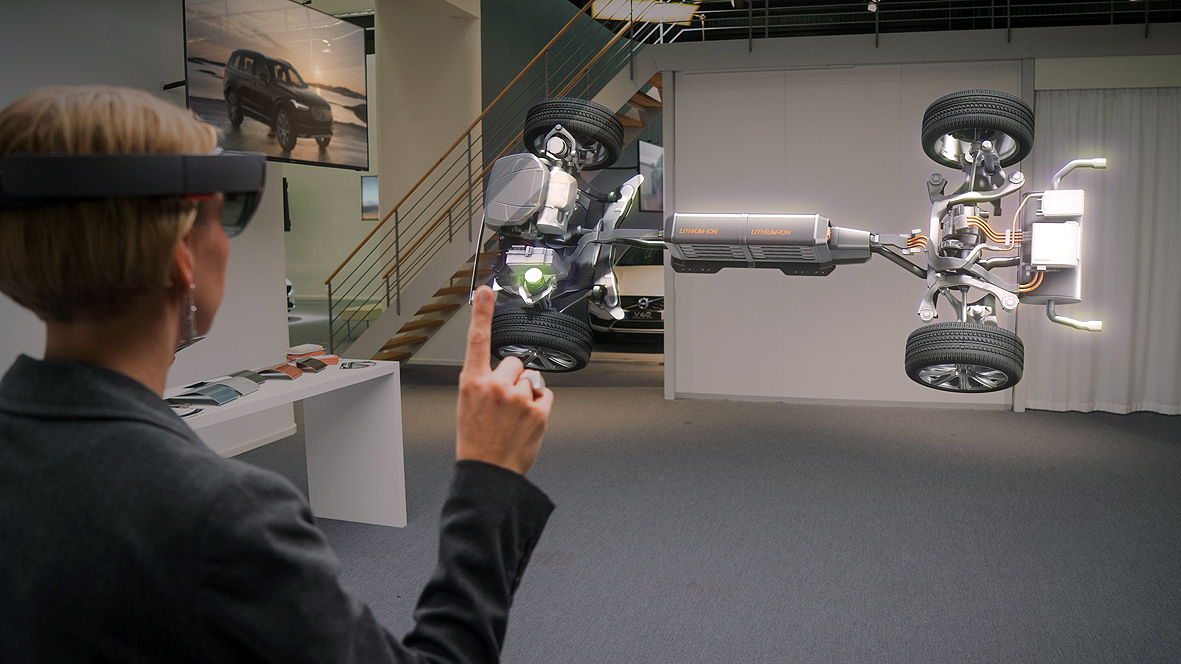
One thing that hadn’t changed, and by all accounts never will, is that the visuals were in a “box” hanging in front of my eyes rather than filling my whole field of vision. According to HoloLens senior director Scott Erickson, increasing the field of view would make it VR rather than mixed reality, and therefore too difficult to walk around in. Of course, there could also be technical reasons why they can’t do this.
The box is problematic in that, as you move closer to holograms, the edges of them literally sheer off until you step back, which is quite jarring. On the other hand, because the “unreal” space is so clearly defined and limited meant I could walk around Microsoft’s space, which included chairs, tables and a stage, without ever fearing I might face plant.
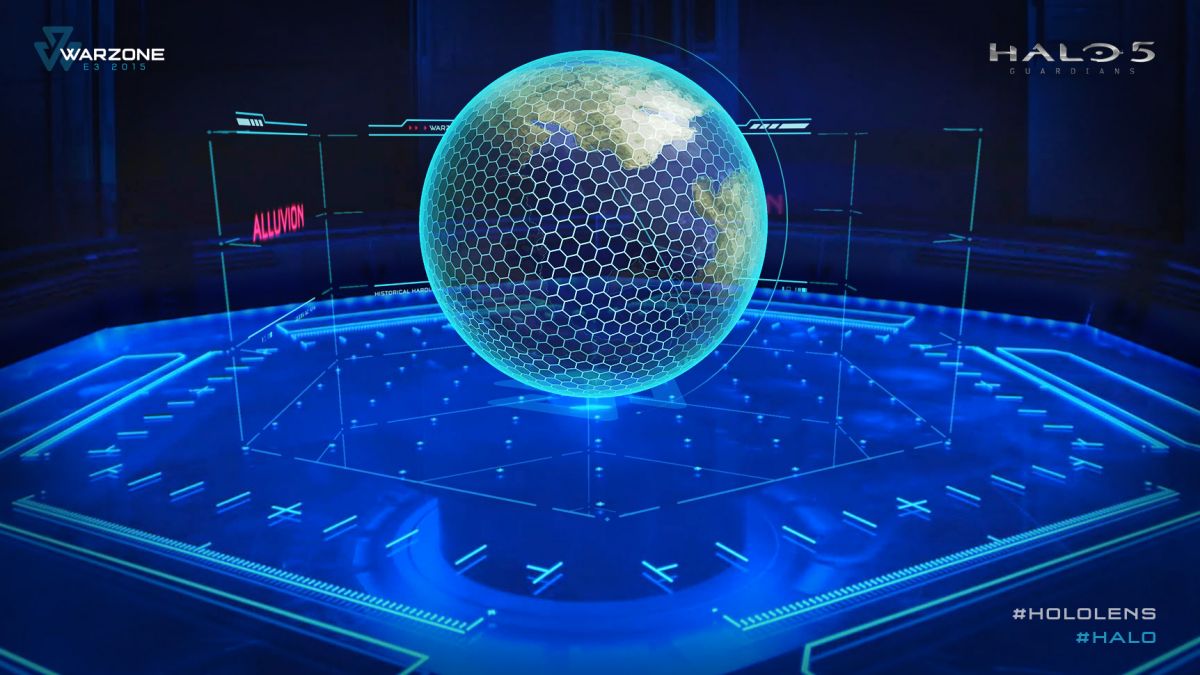
HoloLens and Halo make a fine pairing
We’ve had a glimpse at the potential for HoloLens in gaming with an immersive – though impractical – briefing for Halo 5: Guardians for Xbox One. From the voice of Jennifer Hale to a model of a UNSC Leviathan Supercarrier and Spartan Captain Sarah Palmer, the demo helped prepare me for a 12-on-12 battle that, it should be noted, my team won by a landslide.
One negative to come out of the showing was to learn that the viewer’s limited field of view isn’t likely to get much better anytime soon. While the hardware isn’t final, said HoloLens lead Kudo Tsunoda, the field of view, which feels like looking through a mobile computer monitor, won’t be “hugely, noticeably different either.”
Source: techradar.com






































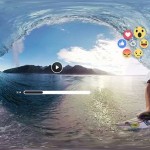



If it's $500 or less and can be used with existing software, I would buy it. It will be interesting when this comes out, Occulus Rift, and DirectX 12 along with Apple's Metal which is already out how fast things change. The PS4 and Xbox One were really not huge steps up in quality of images. But this next stuff will be denser and be able to be manipulated in 3D. I think DX12 brags ten times the level of DX11. I do not know how big the jump was from DX10 to 11 though for reference.
upvote for the use of the word "Gobsmacking"
That word describes how Hololens makes me feel completely!
Imagine having real life items marked with RF codes and being translated into images on the items via the web directly from the manufacturer, exact shape, size, dimensions would be used to make a wrapper around the can virtually
contact lenses
Sounds like you are thinking 'holo deck' 😉
Sure. He said he wear glasses and used it without any trouble "I wear glasses, and I used HoloLens with them on. My glasses didn't get pressed into my face or feel tight around my head, which has happened when I've worn VR headsets. I also didn't get nauseous, a frequent occurance when I wearOculus Rift."
If the video calling can interact with android and iPhone I will be very impressed
> Microsoft has just changed the world of computing again the way it did with Windows.
Microsoft didn't change anything with Windows, other than finally bringing WIMP environments to the poor sods who were still using DOS while Amigas, Macs et al were powering ahead with better UI design.
INCREDIBLE … Well done ! Can't wait to get my own ! Imagine gaming… if these could link to each other, pokemon and digimon and all those holograhical realm games may just come to life , right there, in front of you. Not to mention the data analysis that could be done just by simply creating 3D charts in mid-air.
The technology needs to be a bit improved to get a real immersive feel though, better FOV is vital I think. With that in place I can imagine having rather minimalistic rooms for using hololens type of technology – and rather decorate it virtually.
"I also didn't get nauseous"
Maybe – but were you nauseated?
Nauseous means 'causes nausea'. Your sentence literally means "I did not become nauseating to other people…" Which, I suppose, is a good thing for a VR helmet… just not what you meant, I suspect.
Is the limited field of view a deal breaker?
Kinect 1 was a commercial success for MS. No tech works 100% of the time all the time flawlessly. And Kinect is/has been used in science projects research and adapted for projects and uses outside of just the xbox. Calibrated correctly and in the right setting i have found Kinect works near flawlessly. In the wrong setting and with a crowded noisy room it doesnt work as well. So contrary to your comment, Kinect does actually work.
so after being excited about this, Its becoming more understood that this isn't a "wrap-around" holographic experience, rather, it is a relatively small display in the center of your view. no holographic assets are seen out of the corner of your view, must be looking straight at it.
So, thats a bit of a letdown..basically push the tiny google glass experience closer to the center view and have 3d meshes pinned in a spot.
I think if this is going to have any true value, the lens to display holo must capture the entire field of view for immersion and interest…especially if we are talking about hundreds of dollars for what is ultimately a toy for the majority.
I have no doubt in the very short future, AR headsets are going to revolutionize many mediums..just needs to be done right. best to rework the specs and launch a bit more expensive but done right verses start off with what is ultimately a underwhelming experience..especially after all the hype.
personal opinion: microsoft's first model should have sacrificed resolution and color depth for a vastly expanded field of view. I think microsoft's viewpoint was that color and resolution were expected by the average consumer because of what they already receive on mobile devices. However, this could have been a two stage development process, with the first push being into the work sector, where practicality would have far outweighed novelty, and field of view would have been more important. This would have generated the funding needed to develop increasing resolution and color depth without reducing field of view, and the general consumer would have slowly become more and more interested in purchasing. Microsoft has worked backward, I think, on this invention, and it will pay for that. I mean shoot…isn't the reason microsoft is so big…because they pushed themselves into the work sector first, and the general public followed? On something this new, why not do the same thing again?
Microsoft meets Star Trek = Hollow Deck! I want one
Now only for a cheap price of $99,999
I've done the meetings in a caldera a few times. No glasses needed. It will be great to do from home too.
No, you can't see without the lens.
What we the audience was representation from a special camera unit tied into the lens feed.
I can imagine people creating and customizing a HoloLens skin in collaborative situations. I think I would prefer a PacMan head or some such nonsense. I'm sure the anime crowd would go with Chibi heads. That would definately reduce the tension produced by trying to talk to someone with a visor on their head.
Late to the party here so please don't flame this obvious question, but can someone not wearing the Hololens see the holograms?
It seems that's what they were selling in those demo videos. It looked like you can see the holograms as a casual observer and only need the Hololens to actually control/interact with them. Or are the holograms only visible to those wearing the lens and no one else?
People walk with big headphones in the street today – do they think they look dumb? People look down into their phones more than they talk with the person they are actually physically socialising with. Technology is mostly a cultural thing. A decade ago Microsoft tried to push touch screen technology only to fail miserably because people didn't like touching their screens – perhaps because they recall getting zapped from static charge from their CRT's. Today everybody does it on smartphones and even PCs.
First-person gaming will be boss !
Gonna get canned just like the courier.
Imagine having your car's windshield as a huge HoloLens that automatically displays real time info about objects you approach, including other cars, street signs, addresses, distance, destination, trajectory, weather information, even car's console like speed, fuel pressure, battery volts, etc… crazy stuff! Hopefully within a decade they can get the size down to regular glasses and a decade after that, a mere contact lens! Of course, if we make it that long… 😉